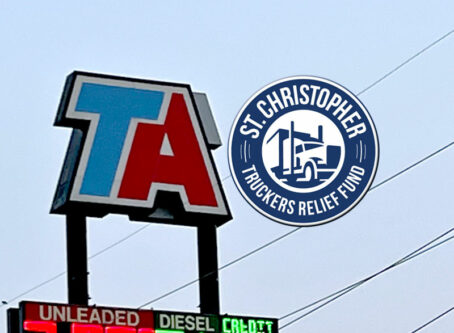FMCSA hopes to clarify regs with new Medical Examiner Handbook
The federal government is making amendments to the advisory criteria given to examiners offering CDL medical certification.
In a Friday, Jan. 19 final rule published to the Federal Register, the Federal Motor Carrier Safety Administration announced a number of amendments to appendix A of 49 CFR Part 391, which regulates physical qualifications for drivers.
In total, 11 of the 13 medical criteria covered under federal code were edited to remove any information that was “outdated, obsolete or no longer relevant” and to provide clarity to the existing criteria.
According to FMCSA, the amendments to the federal code are intended to “help medical examiners assess a driver’s physical qualification.”
“These recommendations and guidance are strictly advisory and do not have the force and effect of law,” the agency said in its final rule. “They were established after consideration of public comments and after consideration of recommendations from the Agency’s Medical Review Board.”
Some of the most detailed amendments came to the advisory criteria for drivers with high blood pressure. Current Federal Code states that in order to obtain CDL medical certification, a driver must “have no current clinical diagnosis of high blood pressure likely to interfere with his/her ability to operate a commercial motor vehicle safely.”
The new recommendations from FMCSA regarding elevated blood pressure and medical certification – along with definitions of the varying stages of hypertension – are as follows:
- Stage 1 hypertension corresponds to a systolic blood pressure of 140-159 and/or a diastolic blood pressure of 90-99.
- A driver in this condition may be medically certified to drive for one year.
- Certification examinations should be done annually thereafter, and blood pressure should be at or less than 140/90.
- If blood pressure is less than 160/100 but greater than 140/90 at subsequent examinations, the driver may be given a one-time certification of three months to reduce blood pressure to less than or equal to 140/90.
- Stage 2 hypertension corresponds to a systolic blood pressure of 160-179 and/or a diastolic blood pressure of 100-109.
- A driver may be given a one-time certification of three months to initiate or adjust antihypertensive drug therapy and to reduce the blood pressure to less than or equal to 140/90.
- If treatment is well tolerated and the driver demonstrates a blood pressure value of 140/90 or less, he or she may be certified for one year.
- Stage 3 hypertension corresponds to a systolic blood pressure of 180 or greater and/or a diastolic blood pressure of 110 or greater.
- A driver should not be qualified, even for a short period, until the blood pressure is reduced to 140/90 or less and treatment is well tolerated.
- A driver may be certified for six months and biannually (every six months) thereafter if at recheck blood pressure is 140/90 or less.
According to the final rule, an elevated blood pressure discovered by the medical examiner should be “confirmed by at least two subsequent measurements.” Additionally, FMCSA recommends annual certification be used if the medical examiner is unaware of the severity of hypertension prior to the driver beginning treatment.
Other clarifications were made to the recommendations for CDL medical certification of drivers with various forms of cardiovascular disease.
According to the final rule, coronary artery bypass surgery and pacemaker implantation should not preclude medical certification, as they are “remedial procedures.” Additionally, the use of anticoagulation therapy alone should not prevent an individual from being medically certified.
For drivers who have lost a limb, the new criteria defines what constitutes a lost limb and when a skill performance evaluation certificate is required for medical certification.
Under the revised criteria, all drivers with the loss of a foot, leg, hand or arm are required to have a skill performance evaluation certificate, “even if an individual has a prosthesis that replaces” the lost limb. The new criteria also specifies that in order to be deemed to have lost a hand, a driver “must have lost all five fingers.”
Another part of the Federal Code requires CDL medical certification be denied to drivers with an “established medical history or clinical diagnosis of epilepsy or any other condition which is likely to cause loss of consciousness or any loss of ability to control a commercial motor vehicle.”
Under the new advisory criteria, drivers with a history or current diagnosis of epilepsy or seizure disorder – or drivers who are taking antiseizure medication to prevent seizures – are “not physically qualified.” While this has remain unchanged from previous versions, there are mitigating circumstances for some individuals with a history of seizures.
Medical examiners may certify drivers if they determine that the “recurrence of loss of consciousness or loss of ability to control a commercial motor vehicle is unlikely and the individual is not taking antiseizure medication.” The agency recommends a waiting period of six months following an episode prior to certifying individuals who meet these criteria.
Certification is also possible for drivers who have experienced a “single unprovoked nonepileptic seizure that was treated with antiseizure medication or left untreated.”
According to the final rule, individuals meeting that description can be certified provided they are “both off antiseizure medication and seizure free for five years or more.”
Additionally, individuals with a medical history of epilepsy or seizure disorder can obtain medical certification if they have been seizure free for a period of 10 years or more and are no longer taking antiseizure medication.
A revised version of the Medical Examiner’s Handbook is expected to be published on Monday, Jan. 22. LL









